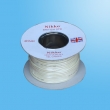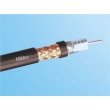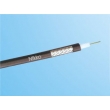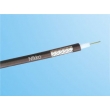There is a widely held misconception that telephone wiring is an impossible feat for the average non-technical person. The fact is that small wiring jobs in your house or small business can be much easier than you’d expect, much easier than shelling out exorbitant hourly fees to the phone company. If you can figure out how to wire speakers for your new stereo, you can easily wire your home or small office for your new phone system.
Wires, plugs, and the network interface
The basics of the wiring is pretty easy to understand. Most telephone wires are one or more twisted pairs of copper wire. The most common type is the 4-strand. This consists of red and green wires, which make a pair, and yellow and black wires, which make the other pair. One telephone line needs only 2 wires. Therefore it follows that a 4-strand wire can carry 2 separate phone lines. The twisting keeps the lines from interfering with each other. If you need to run more lines than just 2, you may want to use a 6-strand, or higher. Telephone wire comes in 2 gauges, 22 gauge and 24 gauge, 24 gauge being today’s standard.
There are 2 types of common modular plugs, the RJ-11 and the RJ-14. The most common is the RJ-11 which uses only 2 of the wires in a 4 strand wire. This is the same kind of plug that you use to plug your telephone into the wall. This is a 1-line plug. The RJ-14 uses 4 wires and is used to handle 2 lines, or 2-line phones.
The first step
The first step to a small wiring job is to figure out what the telephone company has left you to work with. What kind of network interface (NI) do you have? They have probably left you either a punchdown block or a network interface box. If there is a punchdown block, and you can’t get the phone company to install a modular jack for each Plain Old Telephone Service (POTS) or central office (CO) line, then you will need a punchdown tool to connect your inside wiring to the NI. Most new installations consist of a network interface box. This has modular test jacks (where you can plug a phone in to see if the line is live) and a terminal strip from which you run your internal wiring (IW).
Wiring
From the NI you want to plan how you want the wiring in your location to be. The star method is the most common method of wiring. Each extension or phone jack is run directly from the NI or phone system if you are installing one. The other type of wiring is called the series method. In this method one long wire links all of the extensions in a series. This loop method is not widely used anymore. As with the old type of Christmas lights, if one goes out, all of them go out.
Using the star method, you are obviously going to have a few wires coming from your NI, as you will have one wire for each of your plugs. You may want to simplify the wiring and cut your wire costs by having few of the wires carry more than one line or extension.
Let’s take a 2-line installation as an example. Each pair that comprises each of your POTS lines should be labeled.
One of the wires of your POTS line is called the tip wire and the other is the ring wire. There are quite a few possible combinations of colors that could make up your pair. So in order to connect your line to a modular jack, you need to connect the tip wire of the POTS line to the tip wire of the jack, and also the ring wire of the POTS line to the ring wire of the jack. In a modular jack you have red/green and yellow/black. Most of the time you only use the red/green pair. The green wire is the tip and the red wire is the ring. Using the chart, figure out which of the POTS wires is the ring and which is the tip, and connect them appropriately.
If you are not using a phone system and just want to connect your phone jacks directly to the POTS lines, all you need to do is run wire from the NI to your extension jacks. Just connect the correct colors to run the wire. Again, connect tip to tip and ring to ring. As long as you are following the tip-to-tip rule, the fact that you are connecting a white wire with brown stripes to a green wire and a brown wire with white stripes to a red wire shouldn’t be confusing.
There really isn’t much else to know. If you follow these simple instructions you should have your phones working perfectly.







